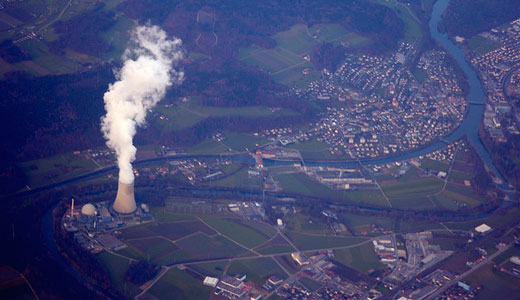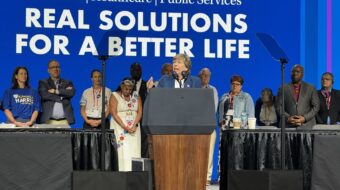
CHICAGO – The Fukushima Dai-ichi nuclear plant disaster – the worst in history – poses a growing threat to the Japanese people, global community, and environment for years to come. The magnitude of the disaster requires global cooperation to resolve.
This is the opinion of Yusuteru Yamada, 73, a retired steel industry engineer who stopped by the People’s World office recently to give an exclusive interview. Yamada, founder of Skilled Veterans Corp for Fukushima (SVCF) toured the U.S. recently to gain support for international scientific and technical cooperation and allowing retired skilled workers to participate in the clean up.
Three reactors at the Fukushima Dai-ichi nuclear plant built along the northeast coast of Japan suffered meltdowns on March 11, 2011 after being struck by the most powerful earthquake (9.0) ever-recorded in Japan and the resulting 133-foot high tsunami. Nearly 20,000 people were killed.
The disaster released more radiation into the air than either the Three Mile Island or Chernobyl disasters or all nuclear explosions including Hiroshima and Nagasaki.
Liquid radiation is poisoning the Pacific Ocean and although no one knows for sure, it is suspected the reactor is melting the rock beneath the plant.
Over 150,000 people have been evacuated within a 20-kilometer radius of the plant. Thirty-six percent of children living in the Fukushima prefect with a total population of two million have abnormal thyroid growths, including cysts and other precancerous growths.
Fish caught only 12 miles off the coast have recorded radiation contamination levels 258 times the safe limit. And contamination is being found in bluefish tuna originating in Japanese waters, caught off the California coast. Radiation in the ocean is expected to reach the US Pacific coast in five years.
Genetic mutations are now appearing in three generations of butterflies near the plant.
Yamada and the SVCF say the clean up needs to be taken out of the hands of the Tokyo Electric Power Company (TEPCO), owner of the nuclear plant.
“The Fukushima site should be a national project independent from TEPCO,” said Yamada. “Such a job can’t be handled by a profit oriented company.”
Many believe the disaster could have been avoided but the entire history of the plant is shrouded in corruption, cost cutting, ignoring design flaws, site location concerns, and collusion with the national nuclear regulatory agency.
Japanese construction projects are traditionally organized through layers of contractors and subcontractors. Yamada estimates there are 7-8 such layers employing over 3,000 workers in the clean up. Such a setup hides what’s actually going from the public and is fertile ground for corruption.
Yamada said this disaster requires mobilizing international expertise along with an international inspection team.
“The nuclear industry in Japan is like a ‘nuclear village’ and is a very closed group. We need to open up that village, especially during the clean up,” he said.
This is one reason why Yamada and his colleagues are demanding retiree workers be involved in the clean up. They also believe current clean up workers are being over exposed to radiation and need to be protected.
“I am 72 and on average I probably have 13 to 15 years left to live,” he says. “Even if I were exposed to radiation, cancer could take 20 or 30 years or longer to develop. Therefore us older ones have less chance of getting cancer.”
Yamada says over 200 highly experienced retirees have offered their skills, including welders, crane operators, pipefitters, engineers, and even cooks.
Yamada traveled the U.S. to encourage Americans and the Obama administration to pressure the Japanese government on the SVCF demands.
Yamada says the worst may be yet to come. A nuclear fuel pool has been left hanging 100 feet in the air in Unit 4. Another earthquake shock could bring it crashing down.
Yamada also noted that radiation levels at Three Mile Island near Harrisburg, PA began rising sharply five years after the accident as workers began removing the nuclear fuel. At Fukushima, the spent nuclear fuel rods must be removed first, and badly damaged container capsules repaired before any fuel can be removed. The process to remove fuel won’t even start for 10 years.
“I want to do my part so that a negative legacy will not remain for future generations,” he said.
Photo: Bill Liao // CC 2.0












Comments